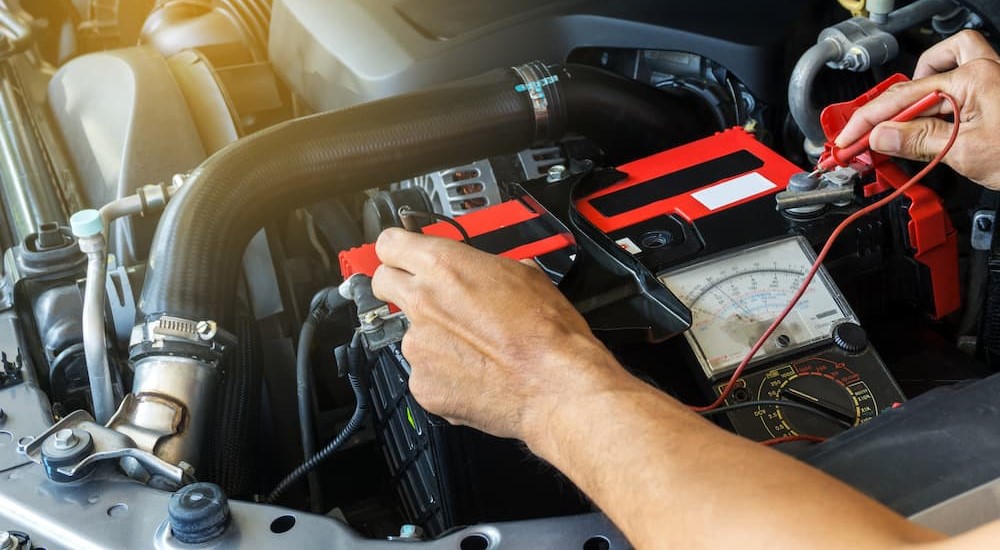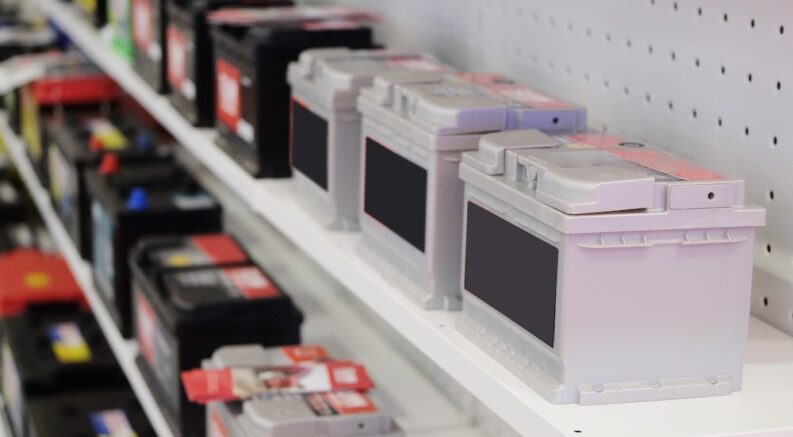Every drive to the store, your office, or the beach starts with the battery. It provides the large burst of cold cranking amps the starter motor needs to turn over. Without a working battery, your engine will never crank. The battery also works as a supplemental power source and surge protector for the various electrical components. When the engine is off, you can use the battery to run accessories (stereo systems, lights, windows, sensors, etc.) for short periods without starting the car.
Like other engine consumables, car battery replacement is an inevitable part of owning a vehicle. You don’t want to wait until the battery is a problem. Otherwise, you’ll be running late for work or missing out on a weekend getaway. Unfortunately, this is an all-too-common occurrence. According to roadside assistance provider AAA, the number one reason they receive service calls is because of battery problems.
You can avoid costly delays by replacing your battery on a regular schedule or at the first sign of trouble. In this guide to battery maintenance, we’ll answer the question of when to replace your car battery so you can enjoy peak performance.
How Long Does a Car Battery Last?
Whether using a classic lead-acid battery, a modern absorbent glass mat (AGM) battery, or a lithium-ion electric vehicle battery, they eventually degrade and weaken. Factors such as extreme heat and cold, engine vibrations, heavy accessory use, letting the vehicle sit unused for a long time, and frequently driving short distances at slow speeds will accelerate this process. The last factor causes stratification, where the electrolytes collect at the bottom of the battery because they rarely get a full charge.
In most circumstances, a car battery will provide three to five years of service. This depends on your driving habits, where you live, and the battery quality. High-performance batteries will last longer, while cheap batteries can start to give out after as little as one year. Also, contrary to popular belief, the alternator doesn’t always recharge the battery at full power. It only puts out maximum power at highway speeds. When idling or driving around town, the engine runs more slowly, which means the alternator also runs more slowly and does not produce as much power. A series of short, slow drives is much harder on the battery because it may not get a full recharge between stops.
Drained Battery vs. Dead Battery
When considering whether to replace a car battery, it’s important to recognize whether it is drained or completely dead. A drained battery, or flat battery, has some energy left, just not enough to start the car. If there is a little residual power remaining, you can either recharge the battery using a standalone changer or jump-start the vehicle to get it going again. However, be aware that when a battery goes flat, it can cause internal damage. This may lead to the battery not charging up as much and/or losing its charge more quickly in the future. A flat battery also causes more strain on the starter motor as it tries to crank the engine with less power.
A dead battery has lost all its power. It won’t operate the windows slowly, run the lights poorly, or operate anything at all. Furthermore, a dead car battery cannot be recharged or jump-started. The only option is a new battery.
If a battery goes flat or dead while still relatively new, it may be due to a problem with the vehicle’s internal charging system, such as a broken alternator or damaged wiring. Therefore, you should get the rest of the car checked out in addition to recharging or replacing the battery.
We should also note that any battery drainage issues will be exaggerated in cold weather. It’s estimated that batteries lose 20-30% of their cranking power at 32 degrees Fahrenheit and up to 60% at 0 degrees Fahrenheit. Therefore, maintaining your battery and replacing it on schedule is even more important if you live in a colder region.

Signs of a Bad Vehicle Battery
As we just discussed, sometimes a battery can go faulty early. Because battery replacement is relatively infrequent, you may simply forget. It happens to the best of us. Therefore, knowing the signs of a dead or flat battery is important. Here are six ways to tell if your car battery has gone bad.
- The engine turns over (cranks) slowly or not at all. You may also hear a clicking noise when you turn the ignition key.
- You start having random electronics-related issues, such as dim and flickering headlights, seat heaters not working, windows rolling down slowly, or the stereo sounding sluggish.
- You must recharge the battery or jump-start it more and more frequently.
- The battery indicator light or check engine light is illuminated on the instrument display.
- The battery case is swollen or bulging, which means the cells are about to burst.
- The battery has a foul smell, resulting from sulfuric acid seeping out of a lead-acid battery.
If you experience any of the first four issues, you should either bring the vehicle to a repair shop or test the battery yourself using a multimeter. With the vehicle and all accessories off, connect the red lead to the positive terminal and the black lead to the negative terminal. A properly charged battery will have at least 12.4 volts. If it is lower, you have a battery problem. For the last two issues, get the battery replaced immediately, as these are serious safety issues.
Ways to Extend Car Battery Life
No vehicle battery will last forever, but there are some things you can do to help it last as long as possible.
Ensure the battery is tightly secured to the terminals for the strongest connection.
Have your battery tested and visually inspected for signs of corrosion at each oil change.
- If there is any corrosion, you can clean it off using a water and baking soda mixture, an old toothbrush, and some petroleum jelly.
- Don’t turn on any accessories until you start the car.
- When you turn off your car, remember to turn off all accessories, unplug phone chargers, and so on to prevent parasitic drains.
- If you have high-power-draw accessories such as an aftermarket sound system, consider installing an auxiliary battery to operate them and take the pressure off the main battery.
- Try to limit your driving to longer distances at highway speeds.
- If you must do a lot of low-speed driving or rarely use the vehicle, recharge the battery every two weeks using a standalone charger or battery maintainer.
Replacing Your Vehicle Battery
You can replace a car battery yourself, but you must be careful. You must ensure all systems are off, properly disconnect the battery using the appropriate tools, and then connect the new battery posts to the correct terminals. Failing to do so can lead to catastrophic results. Also, different vehicles require different battery sizes, and purchasing the wrong one can cause serious long-term problems.
The safest option is to take your car to a trusted repair center. Certified technicians can quickly diagnose any battery issues and replace the battery if needed. Some shops do free battery testing when you come in for other routine maintenance. A professional shop will also have the means to safely dispose of your old battery so the acid, electrolytes, and other contents don’t cause environmental harm.
Battery replacement should be part of your regular vehicle maintenance routine, like oil and filter changes, coolant flushes, tire changes, and other tasks. The best course is to follow the recommendations for replacing the battery, both from the vehicle and battery manufacturers, and watch out for symptoms of a failing battery so you can address the issue promptly.


